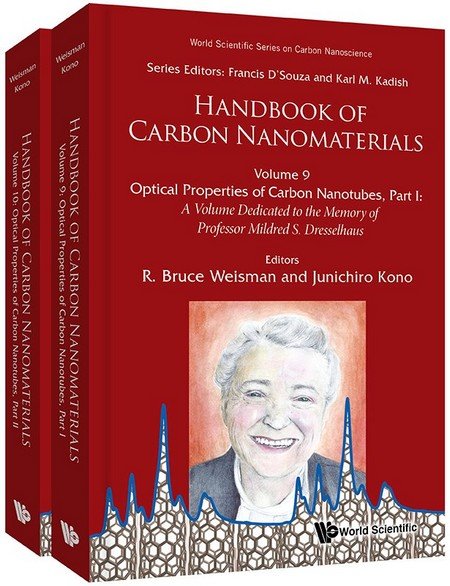Chapter 12: Photophysics and Quantum Emission Behaviors of Covalently Introduced Defects in Single-Wall Carbon Nanotubes
Low-level covalent functionalization of single-wall carbon nanotubes introduces structural defects that are accompanied by new photoluminescent electronic states. Localization of excitons at the defect sites gives rise to a wide range of associated new photophysical phenomena and optical functionality to probe, understand, and harness. Here, we review recent progress in chemistry, electronic structure, spectroscopy, and quantum light emission properties of these intriguing defects and provide some perspective on potential future areas for research in this rapidly developing area of nanotube studies. Current approaches to chemical introduction of photoluminescent defects and synthetic modification of molecular dopants for tuning of emission properties are described. Spectroscopic probes paired with quantum chemistry modeling of the defect states are outlined as an efficient route toward understanding the defect electronic structure. Exciton localization at defects and its consequences for photoluminescence response are also discussed. Such spatial localization of the electronic wavefunction is especially important for introducing new functionality, including expanded possibilities for imaging and sensing applications. We focus on localization as a route for achieving room-temperature single photon emission, important for optical-based quantum information processing. Conditions required for quantum light emission, its demonstration at room temperature, and tunability to telecom wavelengths are shown. We conclude with a discussion of some critical challenges that remain for understanding and controlling covalent defects in nanotube materials in the areas of chemistry, photophysics, quantum optics, and electro-optic device integration.


